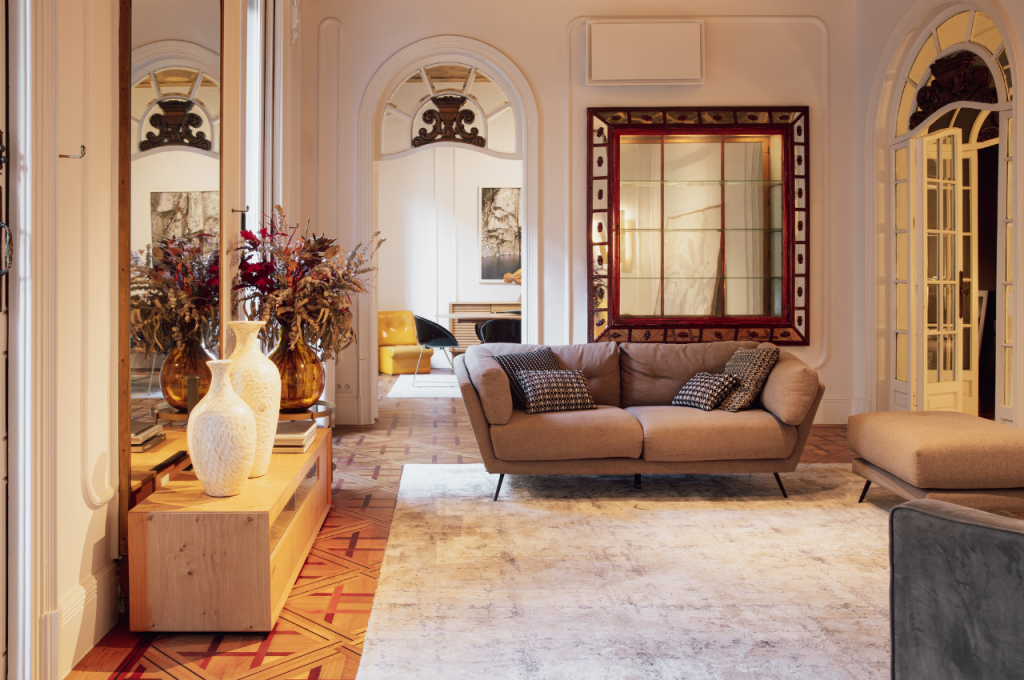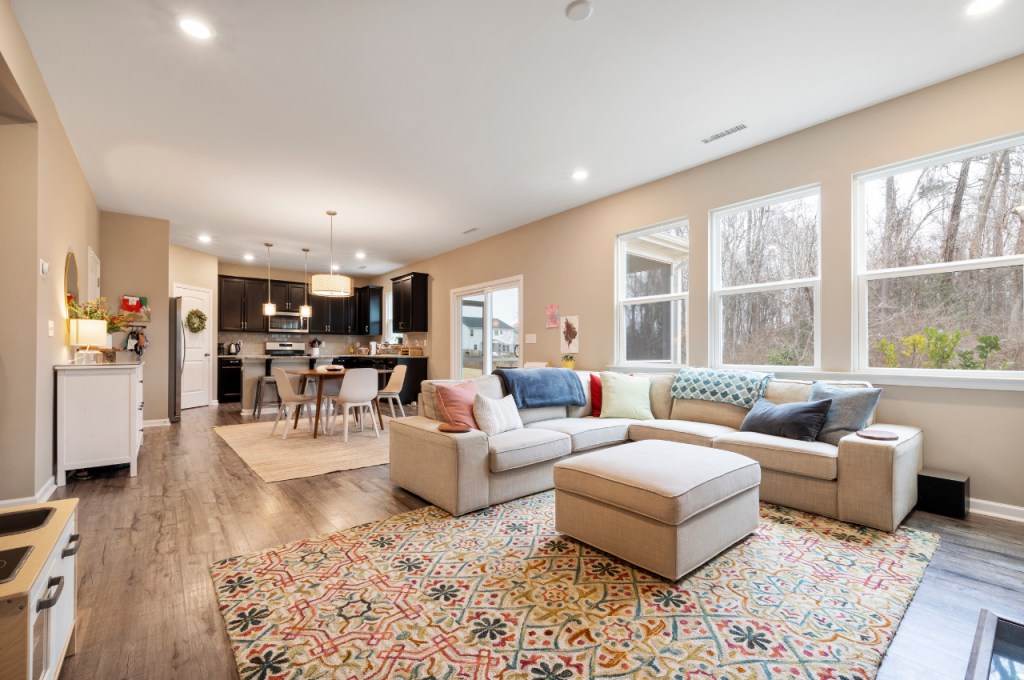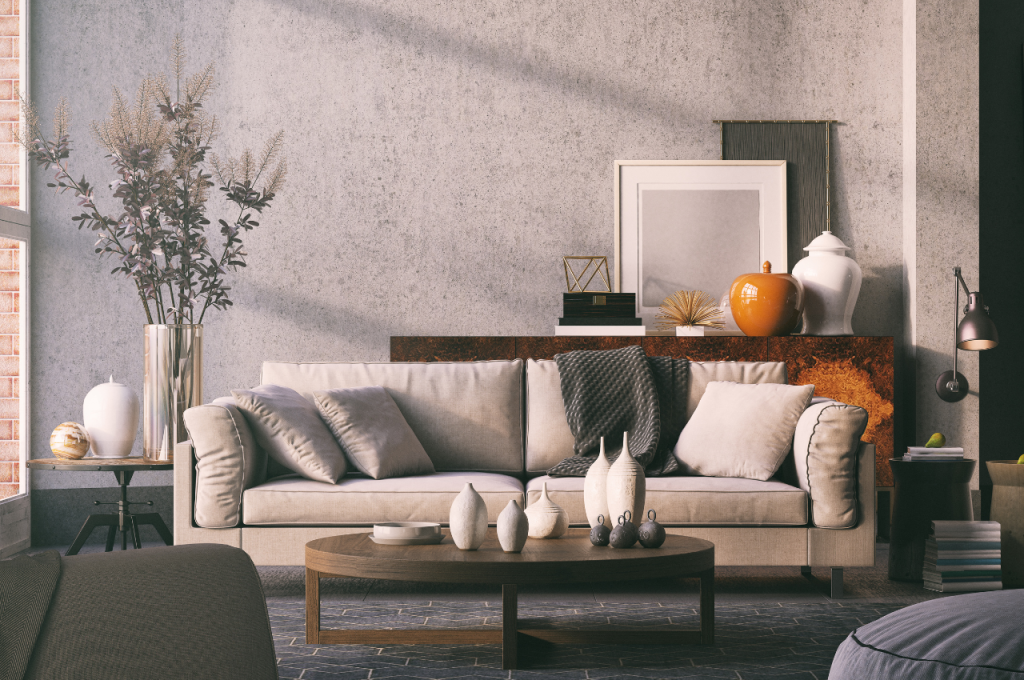To learn home interior design, start by studying design principles and styles. Then, practice by creating mock designs for fictitious spaces to gain experience and confidence.
Learning home interior design can be a fun and rewarding experience. By mastering the basic principles and styles, you can create beautiful and functional spaces that reflect your style. Whether you are looking to pursue a career in interior design or just want to enhance your own home, gaining knowledge in this field can be both enjoyable and beneficial.
In this guide, we will explore the steps you can take to learn home interior design, from studying design principles and styles to practical application and gaining experience. With dedication and practice, you can develop your skills and create stunning interiors that leave a lasting impression.
Importance of Home Interior Design
Home interior design plays a pivotal role in creating a comfortable and aesthetically pleasing living space. It influences the overall ambiance and functionality of a home, reflecting the personal style and enhancing the well-being of its inhabitants.

Boosts Overall Well-being
The interior design of a home significantly impacts the overall well-being of its residents. A well-designed space with good lighting, comfortable furniture, and calming color schemes can create a relaxing and stress-free environment.
Reflects Personal Style
Home interior design provides a platform for individuals to express their unique style and personality. It allows homeowners to curate spaces that showcase their tastes, preferences, and interests, ultimately creating a living environment that feels truly personal and inviting.
Understanding Your Space
Learn the art of home interior design and uncover the secrets to creating a space that reflects your style with our comprehensive guide on understanding your space. Discover tips and tricks to transform your home into a stylish sanctuary.
Understanding your space when it comes to home interior design, understanding your space is crucial. By assessing the room size and analyzing natural light sources, you can make informed decisions to optimize your space effectively.
Assessing Room Size
Start by measuring the dimensions of your room to determine the available space. Consider the width, length, and height to understand the overall size of the room.
Analyzing Natural Light Sources
Take note of the natural light sources in the room, such as windows and skylights. Assess how sunlight enters the space throughout the day to plan your design around natural lighting.
– Measure the dimensions of your room to understand the available space.
– Consider the width, length, and height to determine the overall size. – Assess natural light sources like windows and skylights.
– Plan the design around the natural lighting to optimize the space effectively. Understanding your space is the cornerstone of home interior design, enabling you to make informed decisions on layout and decor arrangements.
By assessing room size and natural light sources, you can create a functional and visually appealing space.
Choosing The Right Color Palette
Learn how to choose the perfect color palette for your home interior design. Discover expert tips and tricks to create a harmonious and visually appealing space.
Creating Mood with Colors
Colors play a crucial role in setting the mood of a room. Bold and vibrant colors can create a lively atmosphere, while soft pastel hues offer a sense of calmness.
Consider the function of the room when choosing colors. Warm tones like reds and oranges are perfect for spaces where you want to promote energy and activity.
Meanwhile, cool tones like blues and greens are ideal for areas meant for relaxation and serenity. Don’t be afraid to experiment with different shades to find the perfect balance.
Harmonizing with Existing Furniture
When selecting a color palette for your home, it’s essential to harmonize the new colors with your existing furniture. Neutral tones like beige, gray, or white can serve as a versatile base.
Aim for a cohesive look by pulling accent colors from your furniture pieces into the overall color scheme. This creates a sense of unity and ensures that the space feels well-coordinated.
Take into account the style and era of your furniture when choosing colors. Modern furniture pairs well with bold, contemporary colors, while traditional pieces may be better fulfilled by classic, timeless hues.
Furniture Selection & Placement
Enhance your home’s ambiance by mastering furniture selection and placement. Learn how to elevate your living space with expert interior design tips and create a harmonious environment. Discover the art of transforming your home into a stylish and functional haven.

Balancing Aesthetics with Functionality
When it comes to designing your home’s interior, finding the perfect balance between aesthetics and functionality is key. You want your furniture to not only look good but also serve a purpose. Here are some tips to help you achieve this delicate balance:
- Consider your style: Start by determining the overall style and vibe you want to create in your home. This will guide your furniture selection process and ensure that everything works harmoniously together.
- Measure your space: Before bringing in any new furniture, take accurate measurements of your space. This will help you choose pieces that fit well and create a sense of proportion within the room.
- Think about functionality: While aesthetics are important, it’s equally essential to consider how each piece of furniture will be used. Will it provide sufficient storage? Is it comfortable and practical for everyday use?
- Invest in quality pieces: Furniture is a long-term investment, so it’s wise to prioritize quality over quantity. Look for well-made pieces that will stand the test of time both in terms of durability and style.
- Experiment with mixing and matching: Don’t be afraid to mix different styles, materials, and colors to create an eclectic and personalized look. Just ensure that there is a cohesive element that ties everything together.
- Declutter and simplify: Avoid overcrowding your space with too much furniture. Embrace simplicity and decluttering to allow each piece to stand out and create a visually pleasing environment.
Optimizing Traffic Flow
Another crucial aspect of home interior design is optimizing the traffic flow within your space. Here are some tips to ensure your furniture placement enhances the flow:
- Create clear pathways: Arrange your furniture in a way that allows for easy movement and navigation throughout the room. Avoid blocking doorways or creating obstacles that disrupt the flow.
- Consider the focal points: Determine the focal points in each room, such as a fireplace or a window with a stunning view. Arrange your furniture in a way that highlights these focal points and enhances the overall flow of the space.
- Mind the scale and proportion: Choose furniture pieces that are proportionate to the room’s size. Oversized furniture can make a space feel cramped, while undersized pieces may appear insignificant or disproportionate.
- Group furniture for conversation: Arrange seating areas in a way that promotes conversation and interaction. Create cozy arrangements that allow people to face each other comfortably and engage in meaningful conversations.
- Consider the functionality of each room: The traffic flow in a bedroom will differ from that in a living room or kitchen. Take into account the specific needs of each room and arrange the furniture accordingly.
- Keep functionality and aesthetics in mind: While optimizing traffic flow is essential, it shouldn’t be at the expense of aesthetics. Aim for a harmonious balance where both functionality and visual appeal are equally considered.
Accessorizing and Adding Personality
Enhance your home interior design by incorporating unique accessories that reflect your personality. Experiment with different textures, colors, and styles to create a space that feels authentic to you. Adding personal touches can elevate the overall aesthetic and make your home feel like a true reflection of your individuality.
Mixing Textures and Patterns
Adding personality to your home interior design is all about the little details that make a space uniquely yours. Accessorizing is a crucial element in creating a cohesive and inviting environment that reflects your style. Whether you prefer a minimalist aesthetic or enjoy vibrant and eclectic interiors, incorporating personal touches, mixing textures and patterns, and selecting the right accessories can bring life and character to any room. In this section, we’ll explore these key elements to help you transform your home into a space that truly reflects your personality.
Incorporating Personal Touches
Incorporating personal touches is the perfect way to showcase your individuality and create a home that feels truly unique. Start by displaying sentimental items such as family photographs, treasured heirlooms, or meaningful artwork. These items not only add personality but also serve as great conversation starters when guests visit. You can also incorporate items that reflect your hobbies or interests, such as books, musical instruments, or travel souvenirs. By infusing these personal elements, your home becomes a reflection of who you are, making it a truly welcoming and warm space.
Mixing Textures and Patterns
When it comes to creating a visually appealing and dynamic space, mixing textures and patterns is key. Play with different fabrics, such as velvet, linen, and faux fur, to add tactile appeal to your furniture, pillows, or curtains. Mix different patterns such as stripes, florals, and geometric designs for an eclectic and visually stimulating look. However, be mindful of balancing these elements to avoid overwhelming the space – choose one or two dominant patterns and mix them with more subtle, coordinating designs. By skillfully combining textures and patterns, you can create an inviting and visually captivating home interior design.
Remember, incorporating personal elements and balancing textures and patterns is the key to creating an inviting and visually captivating home interior design.
Role of Lighting in Interior Design
Lighting is a fundamental aspect of interior design that can significantly impact the look and feel of a space. Lighting plays a crucial role in home interior design, creating ambiance and highlighting key features.
Layering Different Lighting Types
Discover the art of layering different lighting types in interior design to create depth, ambiance, and functionality within a space. Combining various lighting types like ambient, task, and accent adds depth and dimension.
Enhancing Ambiance
Adjusting light intensity and color temperature can transform the mood of a room.
Incorporating Greenery and Natural Elements
Introducing greenery and natural elements into your home interior design can enhance the aesthetics and create a harmonious, tranquil atmosphere. By carefully selecting indoor plants and integrating natural materials, you can transform your living space into a calming sanctuary that promotes well-being and visual appeal.
Benefits of Indoor Plants
Indoor plants offer numerous benefits beyond their decorative appeal. They improve air quality, reduce stress, and promote a sense of well-being. Their natural presence can contribute to a calming ambiance, creating a more peaceful living environment.
Bringing the Outdoors In
Bringing the outdoors into your home adds a refreshing touch to your interior design. By incorporating natural materials such as wood, stone, and wicker, you can create a seamless connection to nature, fostering a relaxed and inviting atmosphere.
Budget-friendly Design Hacks
Discover budget-friendly design hacks that will elevate your space without draining your wallet. From repurposing and DIY projects to savvy shopping tips and minimalist design principles, learn how to create a stylish and inviting home without breaking the bank. Whether you’re a seasoned decorator or just starting these budget-friendly hacks will inspire you to get creative and transform your space on a budget.
Diy Projects and Upcycling
One of the easiest ways to learn home interior design on a budget is through DIY projects and upcycling. Not only are these options cost-effective, but they also allow for personal creativity and uniqueness. Dive into simple DIY projects like creating your wall art using repurposed materials or transforming old furniture with a fresh coat of paint. Upcycling items such as mason jars, old pallets, or wine bottles can elevate your space with minimal spending.

Shopping Smart for Decor Pieces
When it comes to budget-friendly interior design, shopping smart for decor pieces is key. Look for sales, discounts, or clearance sections in home decor stores. You can also explore thrift stores, flea markets, and online marketplaces to find unique items at affordable prices. Additionally, consider borrowing or swapping decor items with friends or family to add variety without breaking the bank.
Frequently Asked Questions
Certainly! Here are some frequently asked questions (FAQs) about mastering home interior design:
Q. How can I learn home interior design on my own?
To learn home interior design on your own, you can start by reading books or online resources, attending workshops or courses, practicing with small projects, and seeking feedback from experienced designers. Take inspiration from design magazines and analyze different design styles to develop your unique style.
Q. What are the key elements to consider in home interior design?
The key elements to consider in home interior design include color palette, furniture arrangement, lighting, texture, and accessories. A cohesive color palette creates a harmonious atmosphere, while proper furniture arrangement improves flow and functionality. Lighting enhances the mood and ambiance, while textures and accessories add visual interest and personality.
Q. How do I create a budget for home interior design?
To create a budget for home interior design, start by determining your priorities and setting realistic expectations. Research the cost of materials and services, and allocate a budget accordingly. Consider DIY options or reusing existing furniture to save money. Be sure to factor in any additional expenses such as professional fees and unexpected costs that may arise during the project.
Conclusion
Want to become a pro at home interior design? Practice, explore new trends, and stay creative. With dedication and patience, you can enhance your skills and create stunning spaces. Start small, seek inspiration from others, and always remember to personalize your designs.
Enjoy the journey of learning and transforming spaces!

